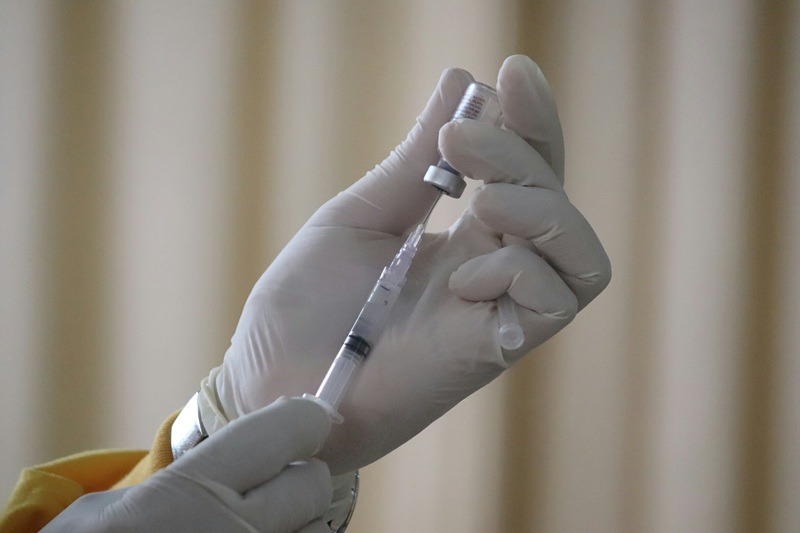Secretary of Health and Human Services Robert F. Kennedy, Jr., did not hide his disdain for FDA prior to his appointment, stating:
FDA’s war on public health is about to end. This includes its aggressive suppression of psychedelics, peptides, stem cells, raw milk, hyperbaric therapies, chelating compounds, ivermectin, hydroxychloroquine, vitamins, clean foods, sunshine, exercise, nutraceuticals and anything else that advances human health and can’t be patented by Pharma.
Since his appointment, he has indicated his desire to allow individuals to try healing themselves as they see fit, regardless of FDA approval, stating, “We want to make sure that information is out there. But we also want to respect the intelligence of the American people.” At a congressional hearing over the summer he signaled his strong support for wearables and their role in allowing individuals to take control over their health, stating in June, “We think that wearables are a key to the MAHA agenda — Making America Healthy Again. My vision is that every American is wearing a wearable within four years.”
There seems to be a disconnect, however, between Secretary Kennedy’s statements and certain actions by FDA. First, the now famous (infamous?) Warning Letter issued to WHOOP, on which we blogged here, which took a swipe at the extent to which “general wellness” software features on wearables can survive if non-medical claims are “inherently associated” with a disease or condition. Then, on September 16, CDRH issued two safety alerts related to potential risks associated with use of products that have not been authorized by FDA. One of these was focused on devices for measuring blood pressure, stating, “Do not use unauthorized blood pressure devices, including software features on wearables, such as smartwatches and smart rings, that claim to measure blood pressure.” This seems in stark contrast to Kennedy’s statements supporting wearables and the desire to have all Americans use them to track health metrics. The second safety alert pertained to devices used to monitor vital signs in infants.
For both safety alerts, FDA stated that many of these devices “currently sold over-the-counter (OTC) do not have FDA marketing authorization, meaning the FDA has not evaluated the safety and effectiveness of those devices. The FDA recommends looking for an FDA-authorized device appropriate for your [or your child’s] needs.” In contrast to Kennedy’s statements about giving individuals more control over their own health, these safety alerts indicate FDA’s view that consumers should not have access to these types of general health metrics unless they come from products that FDA has reviewed and authorized.
There can be differences of opinion when it comes to whether FDA authorization is appropriate (or legally required) for certain product types. Much of that turns on the claims being made about the product, as discussed in our post on the WHOOP letter. Because, by statute, FDA does not have authority over general wellness products, if a company makes claims that fall within “wellness,” its product should not be subject to FDA oversight. It is then up to consumers to determine how best to utilize such a product – one which, hopefully, includes an appropriate disclaimer indicating that it is not a medical device, is not intended to diagnose or treat disease, and has not been reviewed by FDA. This would be an example where “the intelligence of the American people” should be relied upon to appropriately make use of an unregulated product for low-risk purposes.
Dr. Marty Makary, FDA Commissioner, seems aligned with Secretary Kennedy’s position to make more products available to Americans, stating at a BIO meeting in June 2025 that FDA would “use gold-standard science and common sense to be able to deliver more cures and meaningful treatments for Americans.” At least with respect to medical devices, this has not been our experience since this administration came into office. To the contrary, we have found review teams to be more risk averse and less inclined to make reasonable risk-benefit decisions, even for products that were previously granted Breakthrough Device Designation (BDD). For products seeking BDD, the data requests have ballooned and are entirely out of line with FDA’s own stated requirements.
In addition to seemingly more stringent pre-market requirements, the Agency has kept up its issuance of Warning Letters despite the reductions in force. Historically, CDRH has taken a risk-based approach to issuing Warning Letters, and low-risk products often would not rise to the level of receiving such a letter. Recently, however, many Warning Letters from CDRH are focused on consumer use or other low-risk products. For example, in August, FDA sent a Warning Letter to SeniorLife Technologies about the SeniorLife.AI mobile application, stating that its intended uses are different from devices classified as Measuring Exercise Equipment. More specifically, the Letter states that the app is intended to “screen and ‘pre-diagnose’ mobility and cognitive health conditions.” Claims are related to gait and balance, identification of fall risk, and potential early detection of Alzheimer’s. Other than claims related to the early detection of Alzheimer’s, these claims seem innocuous and are consistent with features offered on wearable products (see, e.g., Apple’s Walking Steadiness feature).
Also in August, FDA issued a Warning Letter to The Richline Group about its Ear Care Antiseptic, Ear Care Solution, and Home Ear Piercing Kit. FDA stated that wound washes containing chemicals such as antimicrobials include risks that require premarket review. Notably, the Warning Letter does not indicate that the product has in fact presented any risks to users, and the product in question is intended only for use as an ear antiseptic after use of the home ear piercing kit—it is not intended for wound healing or other clinical uses.
Given the above, consumers may be left to wonder about the role of FDA in ensuring safety and effectiveness of medical products, and the significance of actions being taken that are increasingly related to low-risk consumer products. As long-time readers of this blog are aware, we have our fair share of criticism for Secretary Kennedy’s stated approach to public health – on this, however, we think consumers should follow the Secretary’s direction and rely on their own intelligence when making decisions about product use. The Center’s failure to find a reasonable path forward to low-risk products and to work with sponsors to remedy minor violations related to low-risk products will only hurt the American public by preventing the availability of such products.








